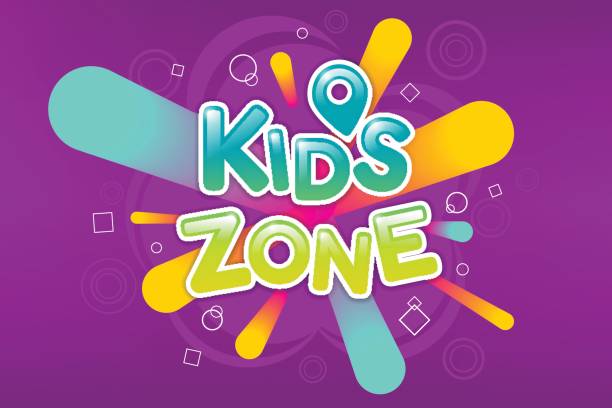Engaging kids in arts and crafts sparks their creativity and helps develop fine motor skills. Simple supplies like paper, glue, and markers can provide endless fun indoors.
Try creating paper plate animals, finger painting, or making greeting cards. These activities are not only fun but also enhance color recognition and imaginative thinking in young children.
Parents can rotate projects weekly to keep the excitement fresh. Even recycled materials like cardboard boxes and bottle caps can be transformed into fun creations.
Hosting a mini art show at home can encourage kids to showcase their crafts. This boosts their confidence and gives a sense of accomplishment for their hard work.
2. Indoor Treasure Hunts
An indoor treasure hunt can be a thrilling game that keeps kids engaged for hours. Create clues leading from one room to another for a fun-filled adventure.
Use riddles, pictures, or simple directions depending on your child’s age. This improves problem-solving skills and gets kids moving without leaving the house.
You can theme the hunt around pirates, detectives, or superheroes to add excitement. Dress up and props make it even more immersive and memorable.
Rewarding them with small treats or stickers at the end adds motivation. This activity combines fun and learning in a very natural way.
3. Storytelling and Puppet Shows
Encourage children to craft their own stories and bring them to life using puppets. This boosts language development and enhances their ability to express emotions.
Make puppets from socks, paper bags, or felt materials. Allowing kids to design characters strengthens their imagination and sense of identity.
Create a mini stage from a cardboard box to set the scene. Let your child narrate the story while family members join as the audience.
Puppet shows can also be a tool for teaching values. Include themes like honesty, kindness, or teamwork in their performances for a learning twist.
4. Science Experiments at Home
Turn your kitchen into a science lab with fun and safe experiments. Kids love hands-on activities that fizz, bubble, or change colors.
Try baking soda and vinegar volcanoes or make slime from household ingredients. These spark curiosity and teach basic science principles in an enjoyable way.
Explain each step and the science behind it to enhance understanding. Use simple language and diagrams if needed to clarify concepts.
Recording observations in a notebook adds a STEM element. Kids can draw what they see and compare results from different experiments.
5. Baking and Cooking Together
Involving children in baking and cooking is not only fun but also educational. It teaches math, reading, and life skills all at once.
Start with simple recipes like cookies, mini pizzas, or sandwiches. Allow kids to measure ingredients and mix them with guidance and care.
Decorating the final dish can be the most exciting part. Use colorful sprinkles, toppings, and icing to let them personalize their creations.
Cleaning up together after cooking reinforces responsibility. Make it a routine to build a strong bond and healthy habits over time.
6. Indoor Obstacle Courses
Create a mini obstacle course using furniture, cushions, and toys. This encourages physical activity and improves coordination indoors.
Include activities like crawling under chairs, jumping over pillows, or balancing on a line of tape. Tailor the course to suit your child’s age and ability.
Use a stopwatch to time their course run for added excitement. Let them try to beat their previous records and improve their agility.
Safety comes first, so ensure all obstacles are soft and secure. Supervision is key to preventing bumps or falls during the activity.
7. Music and Dance Parties
Set up a dance floor in your living room and let the kids groove to their favorite tunes. This is a great energy release and mood booster.
Create themed playlists like jungle beats or fairy tale tunes. Allow kids to take turns as DJ to keep them engaged and in control.
Use scarves, tambourines, or homemade shakers to add to the fun. Dancing with props makes the activity more vibrant and exciting.
Host mini performances where kids choreograph a dance routine. Invite family members to be the audience and cheer them on.
8. Indoor Gardening and Plant Care
Teach kids about nature through indoor gardening projects. Use pots, soil, and seeds to grow small plants or herbs on a sunny windowsill.
Let children decorate their plant pots with paints and stickers. This adds a personal touch and makes the experience more enjoyable for them.
Assign plant care duties like watering and checking sunlight daily. It builds responsibility and helps them understand plant growth.
Track the plant’s progress with photos or a journal. Kids can measure height and observe leaf changes, fostering scientific thinking.
9. Educational Board Games and Puzzles
Board games can be both fun and intellectually stimulating for kids. Choose age-appropriate games that promote critical thinking and cooperation.
Games like Scrabble, Uno, or Memory Match enhance vocabulary and focus. Puzzle building also improves problem-solving and spatial skills.
Play as a family to encourage teamwork and friendly competition. Set rules and take turns to teach fairness and patience.
Introduce new games gradually to maintain excitement. Create a game night routine that kids will look forward to each week.
10. Creative Writing and Journaling
Encourage kids to write short stories, poems, or daily journals. This improves their writing skills and helps express thoughts clearly.
Give fun prompts like “If I were a superhero” or “A day on Mars.” Let their imagination run wild with no pressure to be perfect.
Decorate journals with stickers and colorful drawings. This makes writing more inviting and personalized for each child.
Read their entries together and offer praise for effort. Celebrate creativity, not just grammar, to build their confidence and love for writing.
11. Indoor Camping Adventures
Set up a camping scene indoors using blankets, pillows, and flashlights. Pretend you’re in the woods and tell campfire stories together.
Make paper stars or use glow-in-the-dark stickers on the ceiling. Create a magical night-sky feel to enhance the camping vibe.
Prepare camp-style snacks like popcorn or s’mores in the oven. These little details make the experience immersive and exciting.
Use sound effects or nature playlists to mimic outdoor sounds. Kids will enjoy the novelty and may even want to “camp” again.
12. Virtual Museum and Zoo Tours
Explore the world without leaving your home through virtual tours. Many museums and zoos offer free interactive online experiences for children.
Choose from art museums, science centers, or wildlife parks. Let kids navigate the tour and ask questions to make it interactive.
Follow up with drawings or crafts based on what they saw. This helps solidify the experience and enhances memory and learning.
Make it a weekly event by visiting a new place each time. Kids can create a travel journal to document their virtual adventures.











